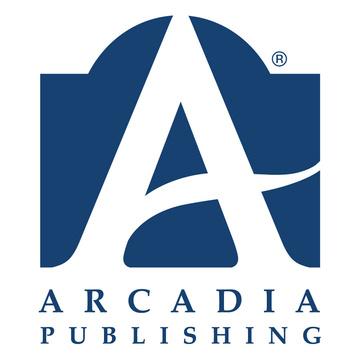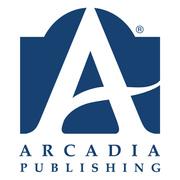

Social Media Guide
Arcadia Publishing
The History Press
Belt Publishing
Arcadia Children’s Books
Pelican Publishing


An Intro to Social Media Marketing
Social media marketing is the process of creating digital content for social media platforms to promote your book and to build community with your audience. It’s one of the fastest ways to get the word out to a large audience and it’s wholly beneficial to the success of your book.
While social media marketing as a whole is incredibly valuable and beneficial to you, your strategy will differ based on which social networks your audience spends time on. There is no need to spread yourself thin trying to master every single platform.

Social Media Platforms
Each social media platform is useful in a different way to reach a different audience. While this isn’t the complete list of all platforms, here are a few of the most widely used platforms.
With 1.9 billion active users daily, Facebook is the largest social media platform and the most established. Since its launch in 2004, it has become an invaluable tool for businesses, offering advanced advertising tools as well as organic opportunities.
Instagram has 1 billion active users daily and utilizes high-quality imagery and video content to share information and promote brands. It boasts of advanced eCommerce tools that help consumers discover new brands, browse products, and even shop directly on the app.
Twitter/X
X (formerly Twitter) is a word-focused platform, which makes it great for public relations and news clips to reach its 211 million daily active users.
LinkedIn is the official professional social media platform. It is where 774 million daily active users can connect, network with each other, and seek new opportunities.
YouTube
With 315 million active daily users, YouTube is the second most visited website in the world It is best known for its long-form video content, which makes the YouTube audience more likely to stay on the app longer.

Social Media Platforms (cont.)
TikTok
This platform is the new kid on the block but quickly rose to popularity with 1 billion active daily users. It utilizes short-form video content to promote brand awareness and community building.
Threads
Threads is Instagram’s version of X. It’s a simple short-form text-based platform that has amassed rapid growth with 275 million active users monthly.
Snapchat
Snapchat is a multimedia app that allows users to upload photos and videos that stay posted for only 24 hours before “self-destructing.” The app is also a messaging app in which users can send each other photos, videos, and text messages that also disappear after a given amount of time.

Facebook is a social networking website and app where users can connect with others and share content under the umbrella company Meta.
Terms to know:
Post: A post is a static update that users share on their wall.
Story: A story is a temporary update that users share. It only stays up for 24 hours. These appear at the top of your news feed or in your profile image.
Share: To share an update means to take another post, story, or video and publish it to your page or wall.
Tag: Tagging is when a user links another user or page to their update or post.
Wall: A Facebook wall is where posts and shares live on a user’s profile page.
Page: A Facebook page is a user’s homebase.
Group: A Facebook group is where people with similar interests gather to discuss and share content about a specific topic.
To create a Facebook account, go to www.facebook.com and click Create new account. Enter your name, email or phone number, password, and birthdate, then click sign up You’ll have to confirm your email or phone number. Once you have confirmed your information, you are ready to start posting.
Update your profile picture and cover image by clicking on those image locations. Your profile picture and cover image are great places to showcase your book. You can snap a quick selfie of you with your book as your profile picture or share your book’s cover as your Facebook cover image

Instagram is a free social media app that allows users to share photos and video content with others also made by the umbrella company Meta (like Facebook). Unlike Facebook or Twitter, Instagram (IG) is primarily a visual app.
Terms to know:
Post: A post is a static image and caption that users share on their page.
Story: A story is a temporary update that users share. It only stays up for 24 hours. These appear at the top of your news feed or in your profile image.
Share: To share an update means to take another post, story, or video and publish it to your story.
Tag: Tagging is when a user links another user or page to their update or post. To do this you place the @ symbol in front of another user's handle.
Handle: A users Instagram name.
Reel: A reel is just another name for a video.
Page: An Instagram page is a users homebase.
Hashtag: a hashtag is a phrase that starts with the # symbol. This is a way to connect users with specific topics. For example: #bookstagram #localhistory. You don’t want to use too many hashtags (4-7 is usually enough)
To start an Instagram account, download the Instagram app in the Apple App Store or the Android Play Store. Then click “sign up.”

Twitter/X is a platform that allows users to share messages shorter than 140 characters. A tweet is a 140-character message viewable by all of your followers.
To get started with X go to x.com and create your profile.
Because of the condensed nature of a tweet, Twitter is a place to share news, jokes, and links. Something to be aware of is that it is public. There is no way to make your Twitter account private, it’s public by default.
This is a great place to share news stories about your book, post the link to your product page, or exciting updates on your book’s journey.

TikTok is a social media platform where users share video content. Videos can be up to one minute long and often include dancing or lip-syncing but they can also be sources of valuable information.
Because TikTok is solely video content and slightly longer form video, you can share a lot more than you would on Instagram!
To start your TikTok journey, download the app from the Apple Store or the Play Store. Open the app, and click sign up.
Here are some content ideas for TikTok:
Take a walk through a location listed in your book and talk about it. You can either film while you walk and talk over the video or bring a friend or a tripod to film yourself while you tell viewers about the location. Sit in the place where you write and tell the viewers about your book or your writing process.
Take viewers to a place where you research and talk about the research aspect of your book.
If you have a favorite writing buddy (like your pets), show them “helping” you write.
Create an unboxing video, where you open up your box of author copies. If you know your book is available at a local retailer, show a video of you “finding” your book on the shelves.
Tips for TikTok: TikTok also utilizes hashtags, so be sure to add some to each post. Captions are less important for TikTok -- keep it short and sweet. And of course, be sure to tag Arcadia Publishing!

Threads
What is Threads?
Threads is a new platform, similar to Twitter/X, but made by Instagram (Meta). Threads uses short-form text to share updates and information with followers. It”s a simple platform for you to share quick and quippy thoughts.
To start a Threads account, download the app from the Apple Store or the Play Store. Open the app and log in to your existing Instagram account.
Here are some ideas to post on Threads:
Post a silly frustration of writing (like cramped hands).
Share about how your back hurts from being hunched over.
Share the cover image to your book.
Share a link to purchase your book.
Share a reason you decided to write this book. Write about your favorite ways to write (a typewriter? With pen and paper?)

Snapchat
What is Snapchat?
Snapchat is a multimedia messaging app in which users can message photos, videos, and text messages as well as post videos and photos to their stories. All messages, photos, and videos automatically disappear within a certain amount of time.
To start a Snapchat account, download the app from the Apple Store or the Play Store. Open the app and create an account.
Terms to know:
Snaps: Photos or videos that you send to another user or post to your story.
Self-destruct: When snap times out and disappears for good.
Viewing time: The amount of time you can view a snap.
Stories: A snap posted to your personal account. Stories are only available for 24 hours.
Discover: Brand-created ads in short-form content for users to find based on their algorithms.

Blogs are made up of individual entries called posts. Usually, blogs revolve around a specific topic or idea and are updated often.
Now that you are an expert on your topic, you may want to create a blog that continues your research or includes information you weren’t able to fit into your book. (NOTE: Authors are fully responsible for funding this unique type of marketing effort.)
A personal website that promotes your book is another marketing tool authors can utilize. Authors who already have a website can add information about their book, upcoming author events, and much more.
Your publicist can provide you with a link to your book’s product page on the Arcadia Publishing and The History Press website, as well as digital images from the book to include on your own site.
If you already have a blog, remember to keep it regularly updated and link to other, relevant blogs. If you don’t have your own blog, but are interested in starting one, WordPress is one of the easiest platforms.
On our blog, we offer news, insights, and stories about our books and authors. If you’re looking for some examples of how to craft a blog post, our blog is a great place to start. You can find that here: https://www.arcadiapublishing.com/blogs/news

Email Marketing
Email is the original social media platform, and your email account is a great tool to use to promote your book
Start by building a list of email addresses of friends, family members, and colleagues You can use this contact list to send out announcements about your book’s publication, along with a link to your product page on our website so that your contacts can purchase it for yourself.
You should send out a few email blasts, not just the book announcement, but be careful not to overdo it! You don’t want to annoy recipients.
Your email signature is also a great tool for promoting your book, because it’s visible by every person you email. Once you’ve received your book’s product page, include a link to it in your email signature, along with a note that you wrote it If you’re able, you can include a thumbnail photo of the book cover in your signature as well. While most of your friends and family know already that you are publishing a book soon, this link will help get the word out.
Tip: You can start a specific email for your book. That way all of your book-related correspondence is in a single place.
Email Topic Ideas
Announce your upcoming book before the publication date. Include a link to the product page, if available.
Publication date email - let people know your book is officially available. Include a link to your Arcadia product page (you can also include links to Amazon and/or Bookshop.org depending on your preference - more links create easier purchasing for recipients).
Media: Email out media announcements as they come in!
Events: Share event dates and locations for people to come see you.
Tip: You can try using email platforms like Substack to get your emails out!

Choosing the Right Platform for You
There is no right or wrong answer to which platforms you should be utilizing to reach your target audience. There is a lot of data out there that will tell you which platform your target audience is using, but that’s more than we need to get into right now.
Instead of asking which platform you should use, start with which platforms you already use. Don’t try to start from scratch, but instead utilize the audience you currently have. Starting from scratch also means learning a new platform, which can take time and frustration that will take away from your book. Not only will you have to learn the new platform, but you will also need to build a new audience, which can take a lot more time than you have in the short few months you have to promote your book.
Another tactic to determine which platforms you can best utilize is to look at which platforms your supporters are using regularly. Take a look at the local historical societies, bookstores, and libraries and see where they put their efforts.
Following various groups is also a great way to utilize social media. You can post about your book in other Facebook pages and/or groups

Important Tips
1.
Be Yourself Authenticity is rewarded on social media. People want to get to know you for you, not just be spammed with advertisements. You are the only one that can talk to your audience with your own voice - your marketing & publicity team are always going to speak to your audience through the voice of the publisher.
Be the Expert As an author, you are considered an expert in your field, and that’s a big reason people will follow you. They want to know what you know, so share your knowlege!
3.
2. Show Some Face Don’t be afraid to get in front of the camera! Your audience wants to see you. They want to see what you’re up to and your excitement for your project.

Tagging
You might hear people talk about tagging when it comes to social media. What is tagging and how do you do it?
Tagging is when you alert a person or company to your post by typing their name in your caption, usually with the @ symbol in front of their name. This is a great way to get other people or businesses to share your post. Alternatively, if you are tagged, you can share their post. For example: if a news outlet posts a story about your book, they can tag you and you can then share that story.
We encourage you to tag us if you post anything about your book. Use the below usernames to tag us in each app.
Facebook: @arcadiapublishing
Instagram: @arcadia publishing
Twitter/X: @arcadiapub
TikTok: @arcadiapublishing

Will Arcadia be posting about my book on the Arcadia social platforms?
Yes! Your book will be posted on the New Book post on its publication date. Arcadia can’t promise to feature your book beyond that. Because our channels are not localized, you are better off posting about your own book and tagging our social channels.
Can I make videos for Arcadia to share?
Absolutely! While we can’t promise every video will be shared, feel free to send your videos to socialmedia@arcadiapublishing.com. Be sure to list your book title and your social media handles in the email.
Should I use a scheduling app?
You certainly can! There are some great ones out there. Just keep in mind that most social media platforms want to see authenticity, and scheduling apps can come across as robo-accounts. You will want to post stories and/or lives to keep the account “real.”
What should I do about negative comments?
Unfortunately, “trolling” is a part of social media culture. The silver lining is that every comment (negative, positive, or neutral) helps boost your engagement. You can delete the comment if it truly hurts your book, but you can also reply (calmly and civilly) to help boost your engagement even more.
Should I pay for social media ads?
You certainly can! This is up to you and whether you feel like it’s worth the cost. If you do pay for an ad or boost your account, be sure to link to a product page (like your Arcadia product page, Amazon, or Bookshop org)
Does Arcadia have an affiliate program?
Yes! We can provide you with an application for our affiliate program. Email socialmedia@arcadiapublishing.com to find out more.
